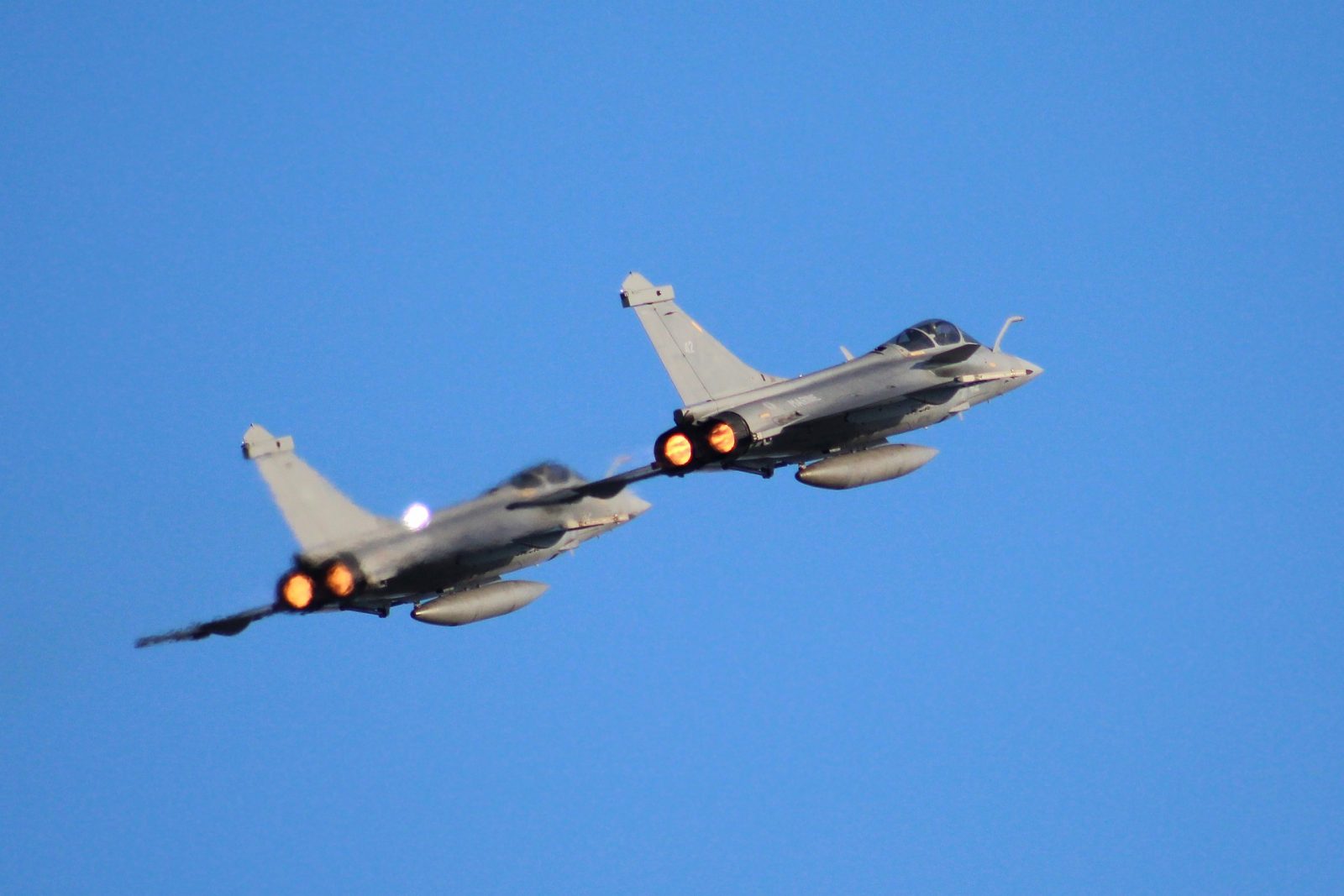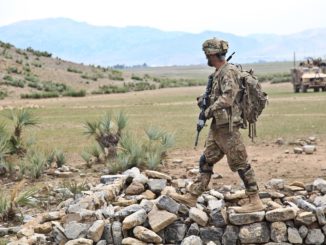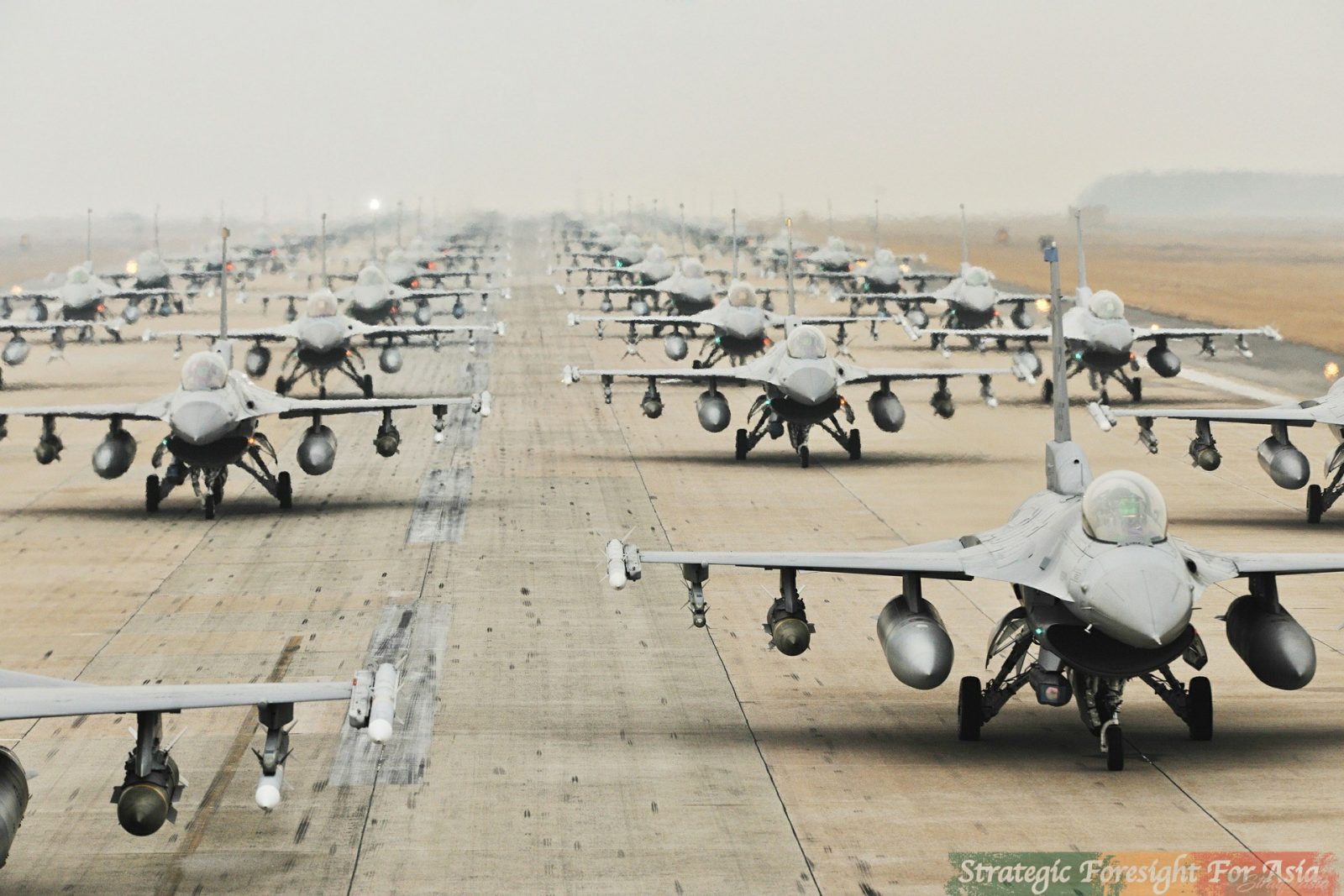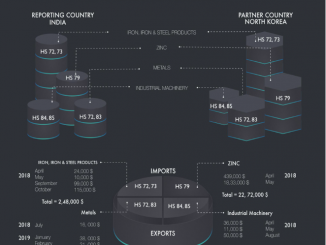 The setback suffered by the IAF at the hands of its arch-rival the PAF on 27 February 2019, has led to serious introspection by the Indian government about the efficacy of the IAF in dealing with the PAF in any major, minor or even miniscule level air encounters between the two. The much-touted SU-30 of the IAF fleet considered vastly superior to anything the PAF could field was bested by the adversary’s fighters, and in the short sharp engagement, a Mig-21 bis and one SU-30 of the IAF were shot down by the PAF while one IAF MI-17 helicopter was lost through fratricide. The Indian claim of downing a PAF F-16 during the combat has been conclusively disproven by independent international defence analysts and observers.
The setback suffered by the IAF at the hands of its arch-rival the PAF on 27 February 2019, has led to serious introspection by the Indian government about the efficacy of the IAF in dealing with the PAF in any major, minor or even miniscule level air encounters between the two. The much-touted SU-30 of the IAF fleet considered vastly superior to anything the PAF could field was bested by the adversary’s fighters, and in the short sharp engagement, a Mig-21 bis and one SU-30 of the IAF were shot down by the PAF while one IAF MI-17 helicopter was lost through fratricide. The Indian claim of downing a PAF F-16 during the combat has been conclusively disproven by independent international defence analysts and observers.
Despite making tall claims about having vanquished the PAF in the Balakot and post-Balakot aerial raids and engagements, the lament about the absence of the next generation of fighters of the Rafale class, particularly by the Indian Prime Minister Narendra Modi is a tacit admission of their failure in the February air encounters. The Rafale deal with France was concluded several years ago, and the first batch of four Rafales was inducted in September 2019. In addition, Lockheed Martin, the world’s largest defence manufacturer, has proposed joint production of their F-21 advanced fighter jets, considered F-16s on steroid, with Tata, India’s premier industrial house. To sweeten the deal further the company is willing to give an assurance to India the F-21s will be developed and produced exclusively for the IAF and if the deal materialises, the sale of their truly fifth-generation platforms, the F-35 stealth fighters would be on offer.
According to the Indian Defence Minister, Rajnath Singh the full complement of 36 Rafales will be operational by February 2021, and the likelihood of the F-21s being added to its inventory in future cannot be ruled out. Both the Rafales and the F-21s are not strictly fifth-generation fighter platforms in that they are not genuinely stealthy. Rafale acquisition, however, would provide a significant boost to India’s dwindling aerial capabilities, considering that it is a twin-engine multi-role fighter with a wide array of weapons. While not a full-fledged stealth aircraft, it offers reduced visibility in the air due to many changes to the aircraft’s external parts like the fuselage, tail-fin, engine air inlets and many more.
The F-21s, on paper, would be superior to the F-16 Block-52s of the PAF. In fact, equipped with an Advanced Electronic Warfare (EW) System, developed uniquely for India, that provides enhanced survivability against ground and air threats, Long-Range Infrared Search and Track (IRST), enabling pilots to detect threats without being detected and Triple Missile Launcher Adapters (TMLAs) allowing the F-21 to carry 40 per cent more air-to-air weapons, the F-21s will be superior to any F-16 block variant, including the much-famed Block 90s.
With the induction of Rafales in the IAF by September 2019, the PAF’s task to keep the IAF at bay in any future conflicts will become more challenging. Better training, morale and professionalism of its personnel, when compared to those of the IAF, have always been the service’s forte and it should be able to maintain the lead in these critical areas. By themselves, they may not be sufficient to ensure victory if the technology gap between the PAF and the IAF widens further.
Rafales are considered slightly superior in aerial duels to the current lot of PAF fighters, and with all factors being equal they would enjoy an edge—but all factors are rarely equal. Experts opine if the aerial engagement is to occur inside Pakistan, the Pakistani fighters would be at an advantage because of better ADGE and also because the PAF would hold the initiative of where and when to launch the counter strike, as was witnessed during operation ‘Swift Retort’. In such brief engagements, the Indian numerical superiority and better war stamina would be of little consequence. The numerical superiority in all probability would be enjoyed by the party with the riposte option as it would decide how much resource it needs to employ for the mission after carefully assessing and analysing the adversary’s aerial defence layout in the given sector.
For the general public in Pakistan, it is essential to understand that both the PAF and the IAF can successfully undertake a surprise air raid on targets close to the international border during peacetime without the likelihood of being intercepted. Neither has the capability, stamina or wherewithal to maintain a 24/7 aerial vigil over the entire length and breadth of the very long international border. The temptation of India carrying out another aerial assault of a similar nature as was witnessed over Balakot after yet another False Flag operation where Pakistan is blamed once Rafales become operational remains a real danger. The additional steps the service ought to initiate to defeat any such misadventure even with the presence of the Indian Rafales need greater reflection.
The nuclear factor has made the likelihood of an all-out war between India and Pakistan remote, although it cannot be ruled out. Even a limited war, as was envisioned by the Indian Cold Start/Proactive doctrine, has been effectively checkmated by the introduction of Nasr, the TNW armed warheads short-range ballistic missiles by Pakistan. The flimsy botched up Balakot raid and its aftermath failed to achieve even the very limited military objectives and has severely dented the reputation of the IAF at the international level. That said, the Indian media gave it the necessary spin projecting Modi as the country’s strong man, the national chowkidar (watchman gatekeeper), who has repeatedly stood up to Pakistan and by his actions punished it for its alleged interference in the Indian Held Kashmir uprising. Did the spin work in his favour? Apparently, it did, given the landslide victory, the BJP under his leadership has won in the just concluded general elections in India.
Will the humbling and humiliating experience of the Balakot raid and post-Balakot aerial engagements deter India from conducting similar style operations in the near future? Now that Modi is safely ensconced as the Indian Prime Minister for the next five years and the need for Pakistan bashing is no longer necessary to boost his faltering popularity, would one see a more tolerant Modi? Perhaps for a brief while but once the Rafales become operational, the Indian government could be tempted to conduct another false flag operation to justify military aggression of the Balakot nature, particularly if Modi’s reputation again nosedives domestically. Pakistan ought to keep a close watch on the Indian actions, and the PAF must keep the powder dry for any eventuality.
The paper will examine the actions the PAF, and the nation can exercise to maintain its edge even after the Rafales, the F-21s or similar platforms become operational with the IAF. It will look at the macro options the service and the country can take to offset the fresh Indian inductions while leaving the tactical details to the professionals in the field.
Options for the PAF. Air superiority platforms that display overall superiority over their adversaries in airborne intercept radars, BVR air-to-air missiles, ability to counter the opponents’ avionics (ECM) and protect its own (ECCM) would enjoy a decisive edge in aerial combats. The PAF’s efforts to further improve the airborne intercept radar and BVR missiles of its JF-17 fleet have to be maintained while upgrades on the F-16 fleet should also be pursued. Indigenous development and/or improvement of existing ECM/ECCM pods are areas that can be usefully exploited by the employment of local talents.
Artificial Intelligence (AI) will be the key determinant in the efficacy of future aerial weapon systems, and the service should promote the study of AI by selecting and sponsoring talented Pakistani youth and enrolling them in AI Masters and Doctoral studies in-country and abroad. These youngsters would then form the crux that would propel the indigenous production of fifth and sixth-generation fighters.
The team effort was the key to the success of operation ‘Swift Retort’. The IAF must have studied the PAF game plan minutely and are taking steps to counter it. All efforts to enhance the capability of the support elements of the strike package like the AEW platforms, the ground-based radars and airborne spoofers should continue.
The service has a rich history of encouraging innovative, fresh ideas based on real-time intelligence on how to handle various combat situations and their validation through realistic aerial exercises by competent formations. This practice should be maintained and continued with full vigour.
The employment of ALCM minimised the threat posed by the Indian ground and air defence elements to the strike package and allowed the PAF in achieving its mission objectives during operation ‘Swift Retort’ without incurring any casualty. Cruise missiles of the US Tomahawk variety would be an attractive alternative for offensive strike missions, given their longer ranges and pinpoint accuracies, particularly when the Indian Rafales and S-400 air defence systems achieve operational status.
Hatf 7/8 ground/underwater-launched Cruise Missile Babur/RAAD are already a part of Pakistan missile inventory that can be armed with nuclear or conventional warheads. Their accuracy can be enhanced to the JDAM standard provided necessary space satellite services are made available. The Chinese satellites are an option that should be explored unless this feature has already been built in the Hatf 7s/8s. With that degree of accuracy, cruise missiles would become an even more attractive strike option than the manned strike platforms.
Three caveats before the decision to use cruise missiles are taken should be kept in mind. First, because the missiles can be armed with either nuclear or conventional warheads, there is the danger the adversary could mistakenly assume it as a nuclear attack and order a nuclear riposte under the ‘use it before you lose it’ dilemma. If their launch becomes inevitable, the message these are not nuclear-tipped should preferably be conveyed to the enemy in advance.
Second, once the ALCM carrying platforms are airborne and even after the H style missile has been launched, the flexibility of aborting the mission or ensuring the missiles are deliberately made to miss the targets is available—no such option can be exercised once the Hatf 7/8 or Tomahawk class cruise missiles are fired.
Third, a cruise missile raid by Pakistan will automatically trigger a similar reprisal attack by India using their supersonic Brahmos, which like Hatf 7/8 can be armed with either nuclear or conventional warheads. Cruise missile launch by either side would invariably result in a swift acceleration up the nuclear escalation ladder.
For Pakistan and the PAF, before a decision to retaliate to another Indian Balakot style incursion with cruise missiles rather than manned aircraft is taken, these aspects should be borne in mind.
While the presence of Rafale fighters and S-400 air defence system in a given sector would provide a stiff challenge for any PAF strike package engaged in a retaliatory strike armed with ALCM, there are options which would reduce the risk substantially. Assuming a situation similar to the Balakot raid occurs again and Pakistan as per its stated policy opts for a quid pro quo attack response, the choice of targets to be engaged and the time would be with Pakistan and the PAF. Rafale fighters and the S-400 missile system cannot cover the entire length of the India – Pakistan border. There would be many areas and targets to choose from where the Rafale and S-400 defence umbrella coverage would be missing. This option is especially important if similar to the operation ‘Swift Retort’ the PAF intends to teach India a lesson, yet keep the crisis from escalating further. The ground-based cruise missile option, on the other hand, would almost guarantee a steep spike in the crisis, enhancing the risk of a nuclear conflagration.
The present lot F-16s and the JF-17s and their later models would serve the PAF well for another decade, and the service should be able to give a befitting response to any sneak IAF incursion. However, given the rapidity with which the IAF is planning to upgrade its fleet with technologically advanced platforms and systems, there would still be a need to procure fifth-generation fighters with stealthy features. The American F-22s and F-35s, the Russian Mig-35s, SU-35s and SU-57s and the Chinese J-10s and J-20s are currently the stealth fighters available in the market. Of the lot, the F-22s, F-35s, SU-57s and J-20s are considered the truly fifth-generation combat aircraft while the others are rated as Fourth Generation ++ by some commentators.
The next batch of sixth-generation fighters is already on the drawing board. Latest reports indicate the Russian SU-57 project is in the doldrums and very likely they would be focusing on the sixth-generation platform, the Mig 41. The USA similarly has unveiled the Next Generation Tactical Aircraft (NextGen TACAIR) project while Japan is working on the Mitsubishi F-3 and Britain and France are developing the Tempest. Both the F-3 and BAE Systems Tempests are considered as the sixth-generation fighters, also known as Future Combat Air System (FCAS). Conceptually FCAS would feature stealthy airframe, long-range missiles that can fly with or without a pilot on board.
The F-22s, F-35s and the BAE Systems Tempests may be ruled out by the PAF for the present because of financial and political constraints while the Chinese, Japanese and Russian models may be within reach. The Air Staff must be minutely studying the performance, economic and political factors of the available options to determine the type most suitable for induction in the service.
Recommendations for Pakistan. The economy is the lynchpin on which all key dimensions of a nation, particularly national security and well-being rest. Pakistan’s economy for the past decade has survived through borrowing from the allies, IMF and the World Bank to avoid a default. Such a state of affairs undermines national sovereignty and makes the nation vulnerable to exploitation. To be able to stand up and ward off the Indian hegemony and aggression, the state must stabilise the national economy. Saddled with a failed and bankrupt economy, no amount of professionalism of the armed forces or its nuclear arsenal can avert national disaster—the example of the breakup of the erstwhile Soviet Union is the most recent.
A sound economy not encumbered by foreign support would be able to meet the PAF force goals necessary to ward off the IAF challenge as it continues to update and modernize. CPEC is crucial for the future of both China and Pakistan. China’s hopes and ambitions to be able to challenge USA’s sole superpower status within the next decade or two rests on the completion of the CPEC projects which would ensure a secure and much shorter logistics supply chain for its current and future energy needs besides providing an easy and economical access for its exports to the lucrative African, the Middle East and European markets. For Pakistan, CPEC has the potential to lift the national economy from its current crisis and all measures to implement CPEC goals must continue to be pursued with full vigor.
The US anxiety as it views the CPEC projects as the springboard that would further propel China’s rise as an economic giant and its growing military might is apparent. Efforts to allay their fears that at least the Pakistani aspects of CPEC would in no way be detrimental to the US interest must continue. In dealing with the USA, while ensuring no measures detrimental to the Chinese interest is even considered, Pakistan has to ensure a balance is maintained in its dealings with the USA. That is the challenge for the country’s foreign policy and its Foreign Office has to contend with.




Be the first to comment